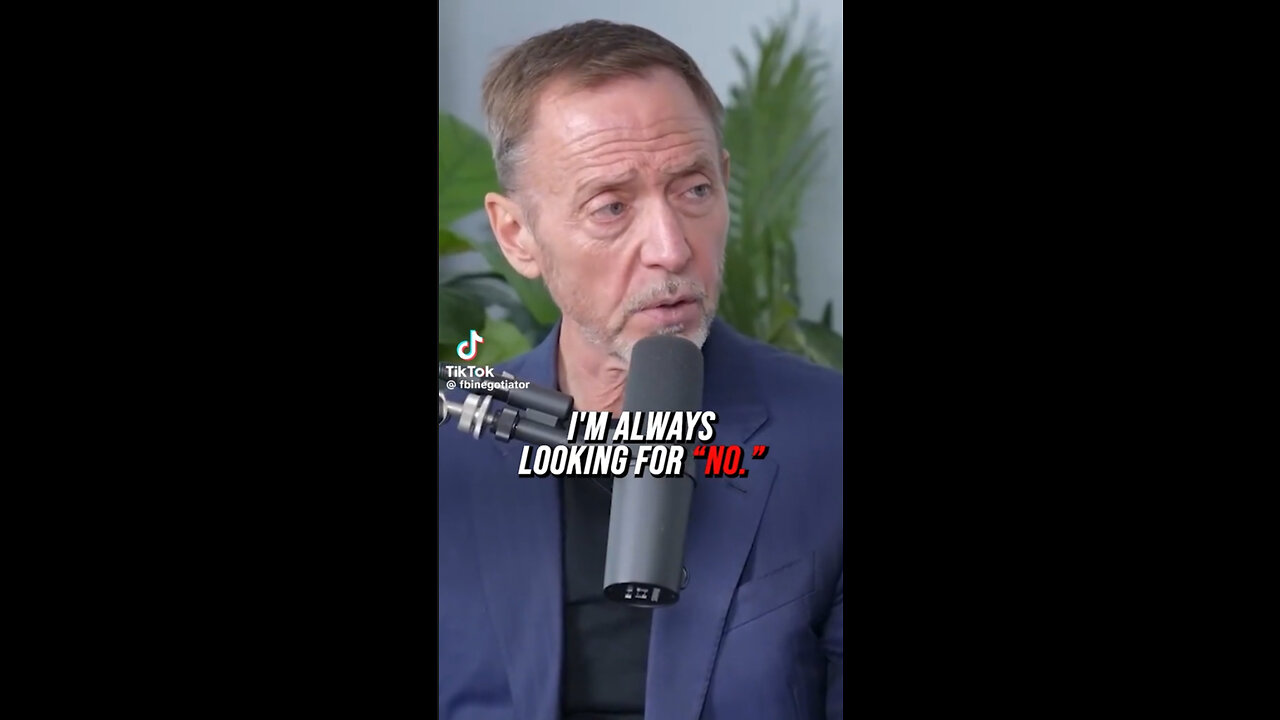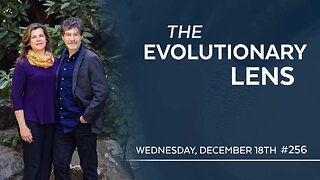Premium Only Content

The Power of “No”: Unlocking the Psychology of Agreement
The way we frame our questions and interactions has a profound impact on the responses we receive. One of the simplest yet most powerful shifts in communication is learning to frame questions in a way that seeks a “no” rather than a “yes.” This counterintuitive approach aligns with human psychology, empowers both parties in the conversation, and creates opportunities for more genuine, thoughtful engagement. Let’s explore why this works, how it applies across different areas of life, and how mastering the art of the “no” question can lead to transformative results.
I. The Psychology Behind Seeking “No”
1. “No” as a Safe Haven
• Saying “yes” often feels like a commitment or concession, and it can trigger a subconscious fear of obligation or vulnerability.
• Conversely, saying “no” feels safe. It allows the respondent to maintain autonomy and control while still engaging with the question.
2. “No” Reduces Cognitive Pressure
• A “yes” often requires deliberation, weighing pros and cons, and imagining potential outcomes. This can create decision fatigue or defensiveness.
• A “no” is simpler, more immediate, and psychologically easier, which leads to quicker and more honest responses.
3. The Subconscious Shift
• When you frame a question to seek a “no,” you’re reframing the dynamic of the conversation. The other person doesn’t feel coerced or manipulated but instead feels empowered to make a clear decision.
II. Practical Applications of the “No” Question Technique
1. Sales and Negotiation
• Traditional sales techniques often push for a “yes,” creating resistance. By flipping the script, you lower the emotional guard of your prospect.
• Instead of: “Would you like to hear about our product?”
• Ask: “Are you against hearing about how this could help you?”
• Instead of: “Can we schedule a meeting?”
• Ask: “Would it be unreasonable to schedule a brief chat next week?”
• This approach transforms a potential adversarial interaction into a collaborative one, as it respects the prospect’s autonomy.
2. Leadership and Team Collaboration
• In leadership, framing questions for a “no” fosters open dialogue and minimizes groupthink.
• Instead of: “Do you think this plan will work?”
• Ask: “Do you see any reasons why this plan might not work?”
• Instead of: “Do you agree with this approach?”
• Ask: “Would you disagree with this approach?”
• These questions encourage critical thinking and create space for constructive feedback.
3. Personal Relationships
• In personal interactions, seeking “no” can help avoid defensiveness and foster mutual respect.
• Instead of: “Can I tell you how I feel?”
• Ask: “Are you opposed to me sharing how I feel?”
• Instead of: “Do you think we should talk about this?”
• Ask: “Is now a bad time to talk about this?”
• These reframed questions make the other person feel less cornered and more willing to engage.
4. Personal Development
• Even in conversations with yourself, framing for “no” can lead to better clarity and decision-making.
• Instead of: “Is this the right decision?”
• Ask: “Is there a reason this might not be the right decision?”
• Instead of: “Am I ready for this?”
• Ask: “Is there anything stopping me from being ready for this?”
• This practice forces you to confront doubts and objections, leading to more grounded and confident choices.
III. The Transformational Benefits of Seeking “No”
1. Builds Trust and Empathy
• By allowing the other person to say “no,” you signal that their boundaries matter. This builds trust and makes them more likely to engage positively.
• Empathy is reinforced because the dynamic feels less like a demand and more like an invitation.
2. Encourages Authenticity
• Seeking “no” reduces the pressure to conform or appease, leading to more honest and thoughtful responses. Authentic communication fosters deeper connections.
3. Facilitates Objection Discovery
• A “no”-framed question naturally surfaces objections, hesitations, or alternative viewpoints. This provides valuable insights that might otherwise remain hidden.
4. Creates Psychological Freedom
• The freedom to say “no” empowers people to act without fear of being trapped. This makes them more open to exploring ideas, solutions, and opportunities.
IV. Expanding the “No” Technique: Advanced Strategies
1. Ask for Permission to Challenge
• Example: “Are you against me playing devil’s advocate here?”
• This opens the door for deeper exploration of ideas without triggering defensiveness.
2. Test the Strength of Commitment
• Example: “Would you be opposed to reconsidering this decision if new information emerged?”
• This keeps options open while respecting the other person’s agency.
3. Reverse the Pressure
• Example: “Is there any reason we shouldn’t move forward with this plan?”
• Instead of asking someone to justify agreement, you ask them to identify barriers, which often reveals underlying concerns.
4. Use “No” to Build Momentum
• In negotiation, start with small “no” questions that establish agreement:
• “Is it crazy to think this solution might work for you?”
• “Would it be unreasonable to explore this further?”
• These questions pave the way for larger commitments by creating a foundation of comfort and trust.
V. The Philosophy of “No”: A Deeper Perspective
Seeking “no” is more than a communication technique—it’s a shift in perspective that honors autonomy and respects the complexity of human decision-making. It reframes conversations from a transactional mindset to a collaborative, exploratory process.
1. Empowering the Other
• The “no” technique places the other person in control, making them feel heard, valued, and respected.
2. Embracing Rejection as Insight
• A “no” is not an endpoint but a gateway to deeper understanding. It reveals what might be holding someone back, offering an opportunity to address their concerns meaningfully.
3. Mastering the Art of Detachment
• By seeking “no,” you detach from the need for immediate affirmation. This creates space for authentic dialogue and discovery.
VI. Practical Exercises for Mastery
1. Reframe Common Questions:
• Take five questions you regularly ask and reframe them to seek “no.”
• Practice using these reframed questions in conversations and observe the difference in responses.
2. Role-Playing Scenarios:
• Practice with a friend or colleague to test how “no”-framed questions feel and work in various situations (e.g., sales, leadership, personal interactions).
3. Debrief Conversations:
• After each conversation, analyze how the “no” technique influenced the flow, tone, and outcome. Look for patterns and refine your approach.
VII. Conclusion: The Transformative Power of “No”
Mastering the art of seeking “no” is a subtle yet profound shift in how we communicate. It honors autonomy, fosters authenticity, and transforms conversations from transactional exchanges into collaborative explorations. By embracing this approach, we not only improve the quality of our interactions but also deepen our connections and unlock powerful insights.
The next time you face an important question, resist the urge to push for “yes.” Instead, invite a “no” and discover the depth, clarity, and connection that emerges when you free others—and yourself—from the constraints of affirmation.
-
 1:00:26
1:00:26
Candace Show Podcast
1 hour agoPiers Morgan x Candace Owens | Candace Ep 123
5.99K36 -
 2:06:51
2:06:51
Darkhorse Podcast
4 hours agoThe 256th Evolutionary Lens with Bret Weinstein and Heather Heying
23.1K18 -
 LIVE
LIVE
Scammer Payback
2 hours agoCalling Scammer Live
259 watching -
 1:21:25
1:21:25
Mally_Mouse
5 hours agoLet's Yap About It - LIVE!
14.2K4 -
 5:35
5:35
Cooking with Gruel
21 hours agoMaking Fresh Salted Caramel
22.6K5 -
 16:16
16:16
DeVory Darkins
18 hours ago $6.76 earnedMedia Panics after Trump Threatens to Sue Media for Defamation
34.3K90 -
 2:15:34
2:15:34
Matt Kohrs
5 hours agoFed Powell Speech & FOMC Rate Decision
23.3K2 -
 LIVE
LIVE
StoneMountain64
4 hours agoThe MOST hyped game of the YEAR
195 watching -
 1:50:12
1:50:12
The Quartering
19 hours agoTim Pool SELLS TO DAILY WIRE? Never Eat Hot Dogs Again, Drones & More
85.8K24 -
 1:17:48
1:17:48
Tucker Carlson
5 hours agoTom Homan’s Plan to Destroy the Cartel Empire, End Child Trafficking, and Secure the Border for Good
129K156